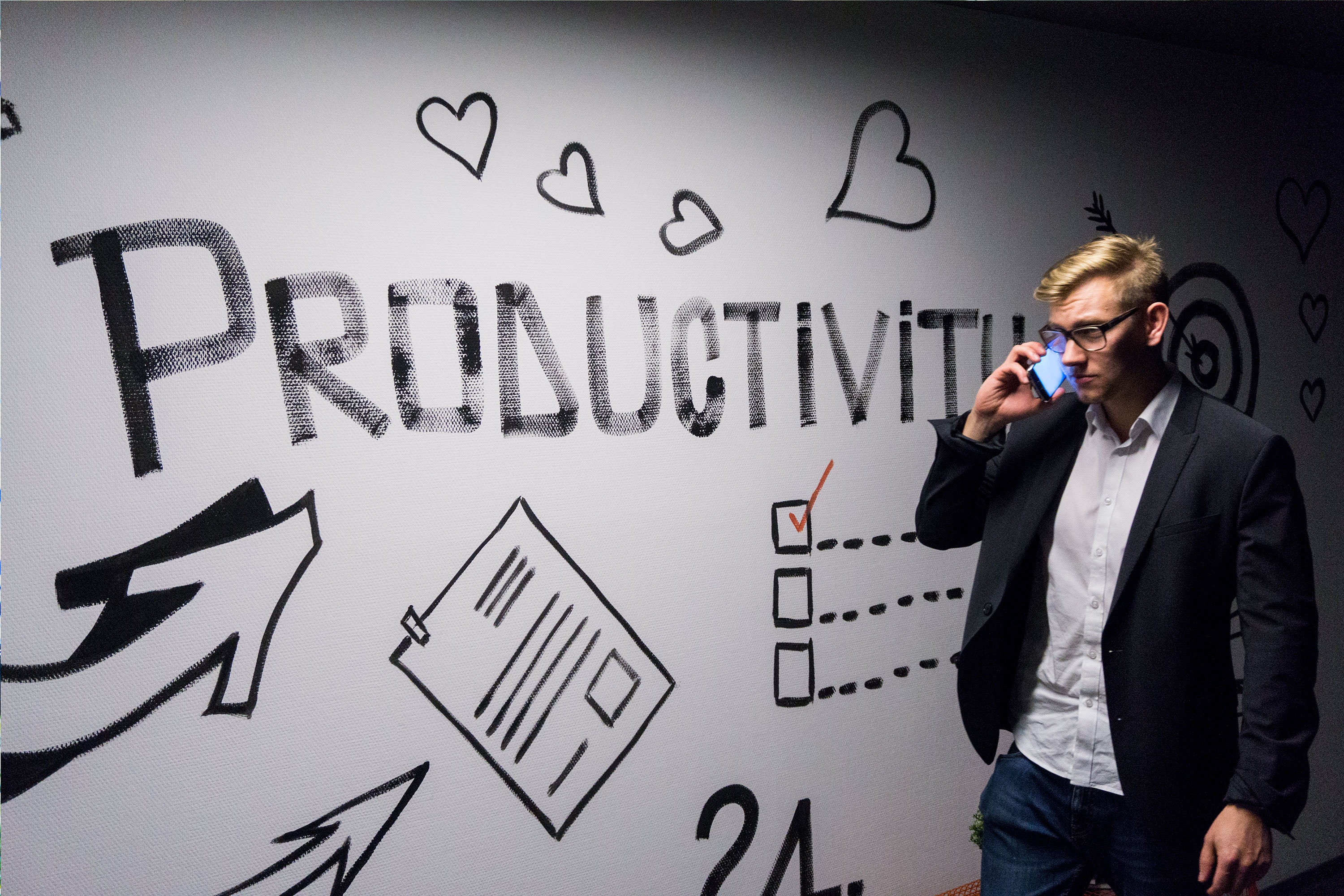Every single process in your business has its own workflow. If you run a particularly efficient business, those workflows should stitch together to create the web of what is everyday business operation. That can only happen if those workflows are optimized to meet the needs of the business and the people who work within it.
Traditionally, managers and supervisors were directly responsible for overseeing these processes to ensure they ran smoothly day-to-day. If there was a problem, someone had to stop, sit down, analyze the workflow, and find a way to improve it. This required time, money, and human resources – three of a business’s most precious resources.
Automation and AI are revolutionizing the business world as we know it, as well as changing how we handle workflows, including the tasks found within each workflow and the overall optimization process. From handling repetitive tasks without human intervention to speeding up big data analysis, these are the ways automation can transform your workflow – regardless of industry, niche, or business approach.
Automate Manual Tasks for Improved Efficiency
Thanks to automation software, you can now turn over many highly repetitive tasks to AI. These are the tasks you handle every single day in essentially the same way. They’re reliable. They’re constant. They’re also completely boring and uninspiring.
Fortunately, there’s an automation software platform near you that’s more than happy to jump in and help. And unlike humans, that software can handle your most repetitive tasks faster and more efficiently than you ever could. That’s not a slight; it’s just an acknowledgement of the fact that software has no need for sleep, food, or breaks away from its desk. We, unfortunately, still do – and we probably will for at least for the next two or three hundred years.
When you automate your most repetitive manual tasks, you vastly increase productivity and efficiency within the workflow. Tasks get handled faster with less propensity for bottlenecks, and that means the everyday hangups (like someone being out sick) that would normally grind the process to a halt are less impactful. They’re also less likely to negatively impact your workflow over time.
Increase Employee Engagement
It might seem strange to suggest that automation can somehow improve human contributions to workflows, but it’s true. When you automate some or all of the most repetitive workflow tasks, you make room for humans to work more creatively with more inspiration.
Here’s the crux; employees need to feel useful, needed, and successful in their roles. If all they do is handle the same repetitive tasks every single day, they become just another cog in the machine. Workflows that are largely made up of these repetitive tasks worsen that perception, leaving employees uninspired, devalued, and unable to work “outside the box” or be creative.
Assigning repetitive manual tasks to an application (rather than a person) creates an incredible amount of freedom. As employees begin to feel that they contribute more to the business than just button-clicking, loyalty and motivation improves. Humans work better, machines work faster, and the entire process just feels more cohesive and efficient from start to finish.
Overall, this is about employee engagement. When employees feel more engaged, they are more likely to feel motivated to succeed or go “over and above.” In workflows that contain both AI-driven and human-driven tasks, that can significantly improve the workflow efficiency from both ends of the spectrum.
Integrated Resource Allocation
Resource allocation is one of the biggest workflow quandaries businesses face every single day. Knowing when and where to allocate your resources (human, machine, or otherwise) is the key to creating highly efficient workflows that don’t result in overspending or overexertion. In an ideal world, every department or workflow is allocated just the right amount of resources at the right time (without any waste).
Unfortunately, many businesses still rely on more bulky processes for resource allocation, including paper tracking or cumbersome spreadsheets. These methods take up a significant amount of time, cost you money in wasted human resources, and may even increase the risk of errors in allocation.
Here’s the good news: automation just happens to be incredibly proficient at handling resource allocation needs. More advanced automation processes and platforms use highly-advanced AIs to monitor, filter, clean, interpret, and analyze big data from each of your workflows, identifying where redundancies or missing resources exist. This includes inventories, resource utilization records, schedules, task records, and business reports.
The result is easier access to the information you need for true optimization. Rather than spending hours pouring through paper records or digging through spreadsheets with hundreds of thousands of cells, you just drill down to the information you need within your automation software. The AI goes on a fetching task taking just a few short minutes, producing a report visualizing the information in an easy-to-digest formula.
Overall, automation reduces the risk of redundancies and extraneous unnecessary costs in wasted resources decline. This includes all those wasted hours searching for information; you can re-allocate them back into something more productive instead, like like coaching, communicating, pitching, or coming up with creative new ideas.
Decrease Human Error Impacts
Human error is normal; it’s a product of the fact that our brains simply aren’t perfect machines that are always capable of finding the right answer. We get tired, frustrated, annoyed, bored, overwhelmed, and even distracted. Stress and looming deadlines cause us to rush, overlooking important tasks or even forgetting to handle them in the first place.
To err really is, unfortunately, human. Our propensity to be affected by stress and our emotions can lead us to make mistakes at work, but that’s just a part of being human in the first place. And that’s all before it causes our workflows to totally bog down and grind to a halt.
Automation systems eliminate the risk of human error by having machines keep a careful, watchful eye over all risky processes. These machines analyze all data, including the very data we enter by hand, and flag us when there’s a potential problem so the issue can be corrected.
Better yet, machines lack bias and emotion, so the decisions they make usually aren’t influenced by feeling. They respond with a calculated or predefined correct answer instead. As the workflow proceeds, everyone engaged with the process receives the right information the first time around, rather than requiring extensive edits or correction processes (or worse yet, lost clients and customers due to errors along the way).
Support Better Compliance Management
To segue off of the human error quotient, automation can also transform your workflow by keeping it safe and compliant at all times. American businesses face an incredible amount of liability risk just from doing business; mistakes can skyrocket liability risks, cause harm to employees, and even cost the business thousands or millions in lawsuits or fines.
Traditionally, businesses handled these concerns by creating compliance management roles and/or teams. Unfortunately, this was extremely costly and time-consuming, and in a lot of cases, compliance management would only find the issue after it had already occurred. That’s still important – after all, it allows the business to change the workflow to prevent it in the future, but it certainly isn’t ideal.
Automating compliance management removes most of those pain points by creating checks and balances that ensure compliance needs are fulfilled at all times. Whether you choose to have AI handle the entire process or simply prompt employees to handle the process, it still helps.
In practice, automated compliance management is a whole lot more robust than most people realize. Use it to establish document approval processes, insert stop-gap automation processes to notify you of missing compliance documents, or run reports in seconds to identify potential non-compliance issues. Or, use it to set up triggers to automatically send out contracts and legal documents to customers based on their interactions with you. You can even automate the dissemination of training documents and new regulatory changes to mission-critical employees in real-time.
Lastly, automation also benefits businesses by notifying them of potential compliance collisions. If two workflows somehow interfere with compliance and/or safety concerns, you can set up a trigger to send out an alert before the processes move forward. This is ideal in project-based environments where the exact process may change or be unique client-to-client.
President and founder of DVI, Aaron Boerger realized early in life that he had a unique combination of x-ray vision and business acumen for seeing the weaknesses that held businesses back – and the ability to define the right tools, technology and strategy to make them stronger.
From founding a successful technology support business in his early teens, to serving as Chief Operating Officer for several companies in the financial, technology and marketing industries, Aaron has developed a reputation for reinventing technology implementation tactics – and the willingness to tell people not what they want to hear, but what they need to hear, in order to achieve success without overwhelm.
Aaron will always go the extra mile to provide the accountability and support his clients need to achieve their goals, yet isn’t afraid to tell them when they are doing something wrong.

